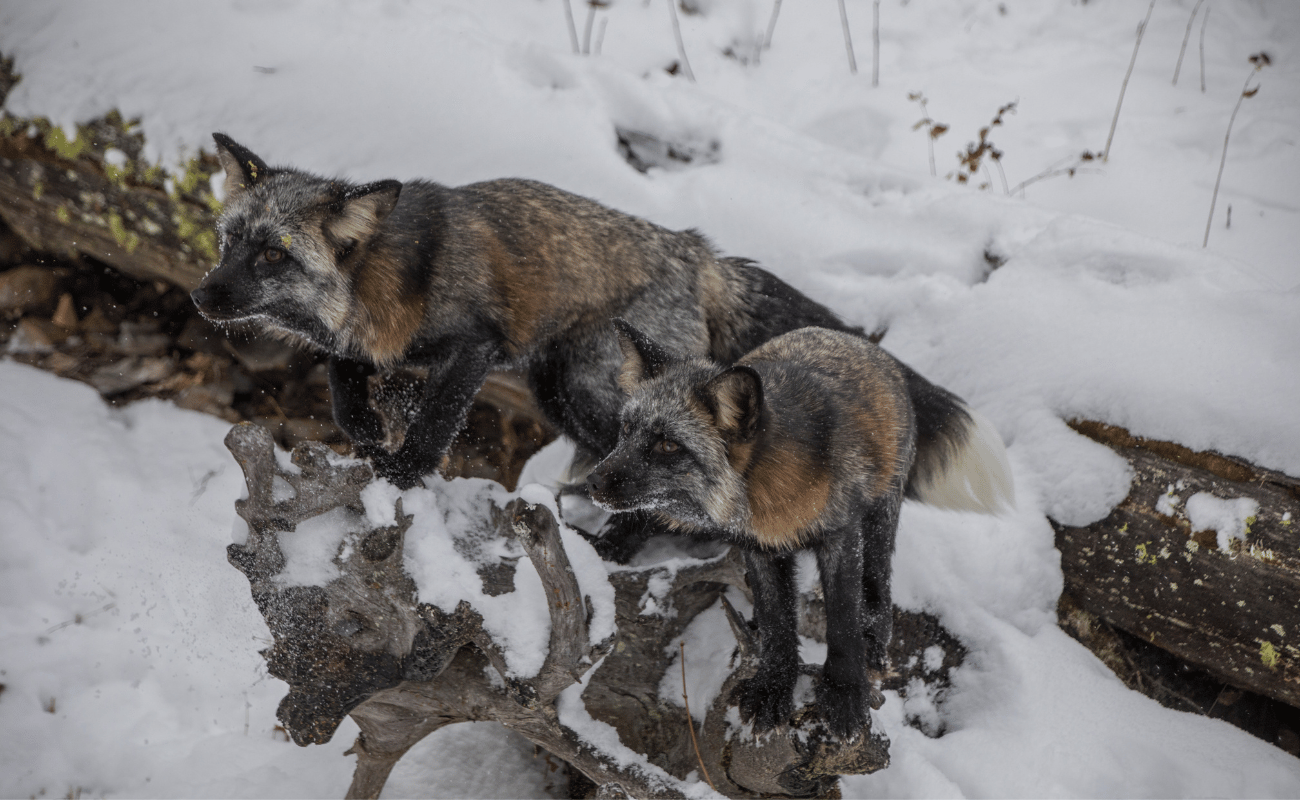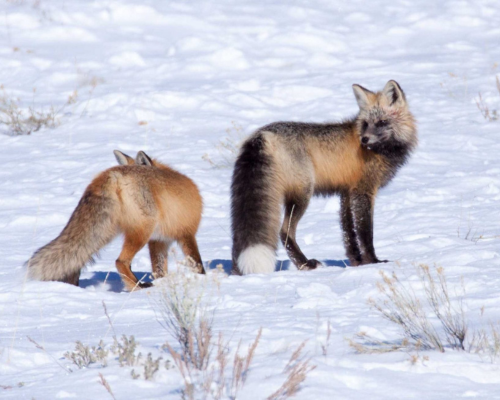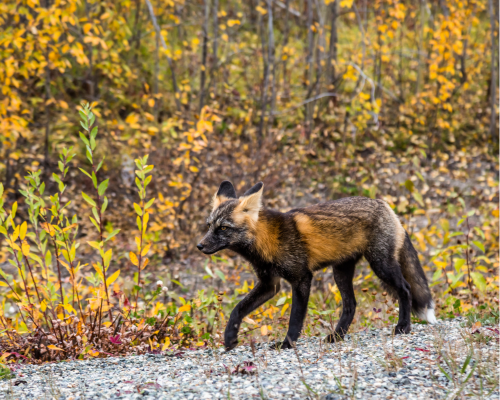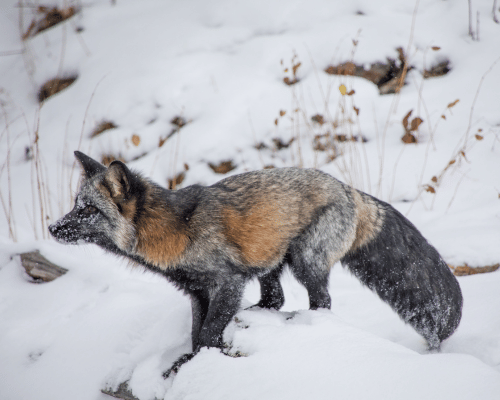Anyone Seen a Cross Fox Lately?

The cross fox is a variant of the red fox which exists here in WY. It is called a “cross” because of the black stripe running down the spine of its back which intersects another black stripe across its shoulders, thus forming a cross shape. This fox is partially melanistic. Fully melanistic animals are totally black in color… the opposite of albinism.
Cross foxes are somewhat common in the northwestern US. Once abundant in ID and UT, their numbers have been significantly reduced due to the uniqueness of their fur pattern.
In comparison to the red/silver fox, cross foxes can be significantly larger. They can weigh up to 30 lbs, as opposed to the red/silver fox average weight of about 15 lbs. The accompanying photo taken near the Gros Ventre River (10 miles north of Jackson) 2 months ago ( taken by my friend Stephen Fetters of Nature’s Corner Photography, www.naturescornerphotography.com ) illustrates the cross pattern and potential size difference between the two. This size difference is due to age, diet and genetics. Cross foxes are not a cross breed between other canine species such as coyotes or gray wolves. They are simply a larger specimen of the red fox.



Life of a Fox
All foxes live on rodents and larger animal carcasses year round. Some of these carcasses are recent or leftover coyote/wolf kills. Others are the result of a wild animal’s naturally-occurring fate. Foxes will feed on a deer, moose, elk or bison carcass, if there is not a larger canine nearby. In warmer months, foxes also consume insects, salmonids, non-predatory fowl and plant life.
Cross/red/silver foxes, as well as coyotes and gray wolves, all mate in February and have their litters in April. At birth, fox kits are blind and weigh less than 1 lb. They will be nursed in the den by the mother for several weeks. Then, they will graduate to solid food provided by the father…primarily meat from a carcass or rodents dad catches. By late spring, the kits will be able to leave the den and travel with the parents, but only under close supervision. By fall, the kits will be grown and able to support themselves. They can then be on their own to seek out new territory and a mate, away from mom and dad.
So what does the future hold for this beautiful fox?
Cross foxes are not “legally” protected. However, I believe they should be “morally” protected. They are exquisite creatures that exist only to fulfill their role as secondary predators/scavengers in nature. They will thrive as long as nature/man allows.
Come see these beautiful animals! Please follow us on Twitter @Teton1Wild .




